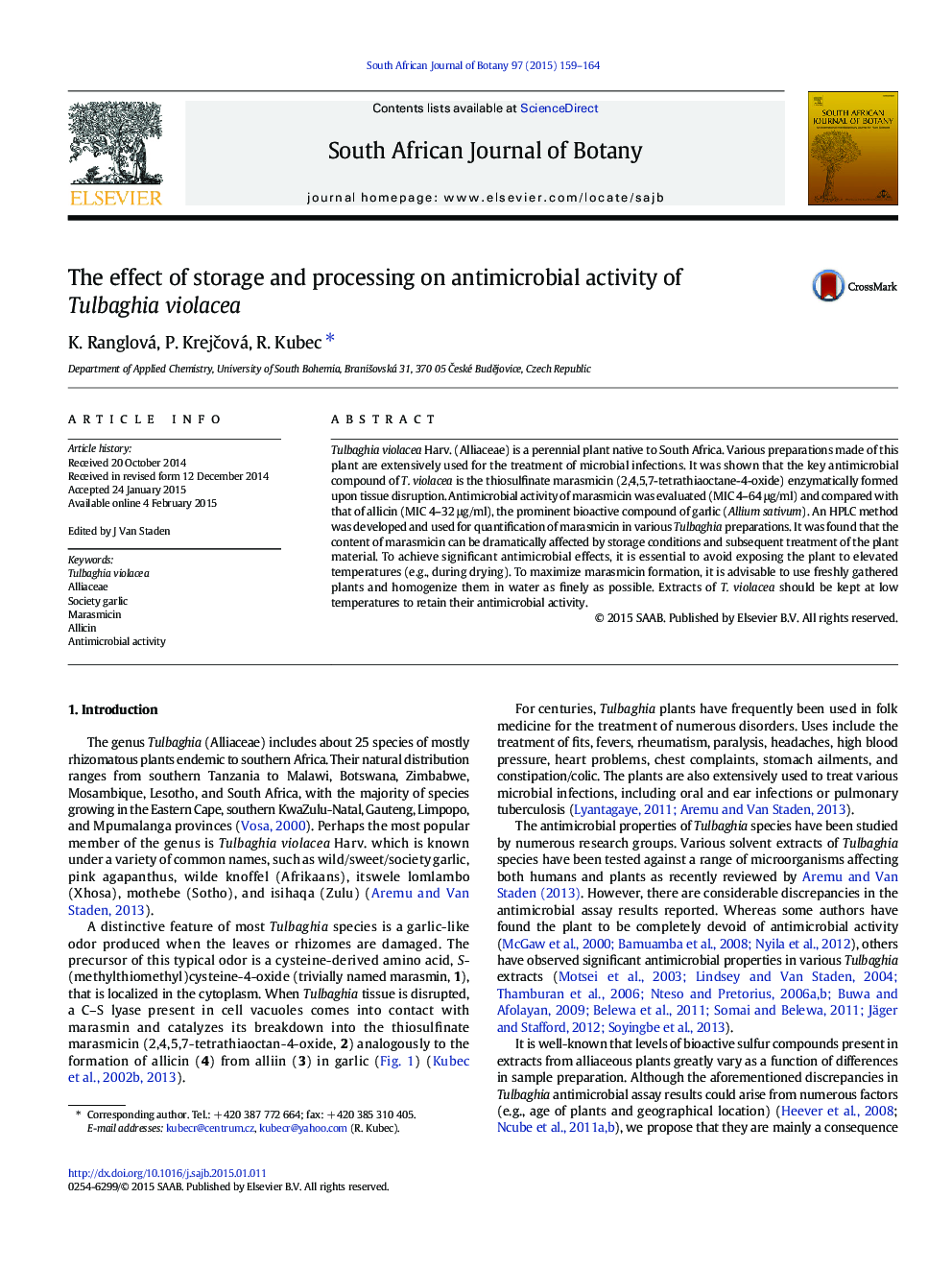| Article ID | Journal | Published Year | Pages | File Type |
|---|---|---|---|---|
| 4520573 | South African Journal of Botany | 2015 | 6 Pages |
•The key antimicrobial principle of Tulbaghia violacea extracts was identified to be the thiosulfinate marasmicin•Antimicrobial activity of marasmicin was evaluated (MIC 4–64 μg/ml)•The content of marasmicin can be dramatically affected by storage conditions and subsequent treatment of the plant material•To achieve significant antimicrobial effects, it is essential to avoid exposing the plant to elevated temperatures•The plant material should be homogenized in water as finely as possible to maximize its antimicrobial activity
Tulbaghia violacea Harv. (Alliaceae) is a perennial plant native to South Africa. Various preparations made of this plant are extensively used for the treatment of microbial infections. It was shown that the key antimicrobial compound of T. violacea is the thiosulfinate marasmicin (2,4,5,7-tetrathiaoctane-4-oxide) enzymatically formed upon tissue disruption. Antimicrobial activity of marasmicin was evaluated (MIC 4–64 μg/ml) and compared with that of allicin (MIC 4–32 μg/ml), the prominent bioactive compound of garlic (Allium sativum). An HPLC method was developed and used for quantification of marasmicin in various Tulbaghia preparations. It was found that the content of marasmicin can be dramatically affected by storage conditions and subsequent treatment of the plant material. To achieve significant antimicrobial effects, it is essential to avoid exposing the plant to elevated temperatures (e.g., during drying). To maximize marasmicin formation, it is advisable to use freshly gathered plants and homogenize them in water as finely as possible. Extracts of T. violacea should be kept at low temperatures to retain their antimicrobial activity.
